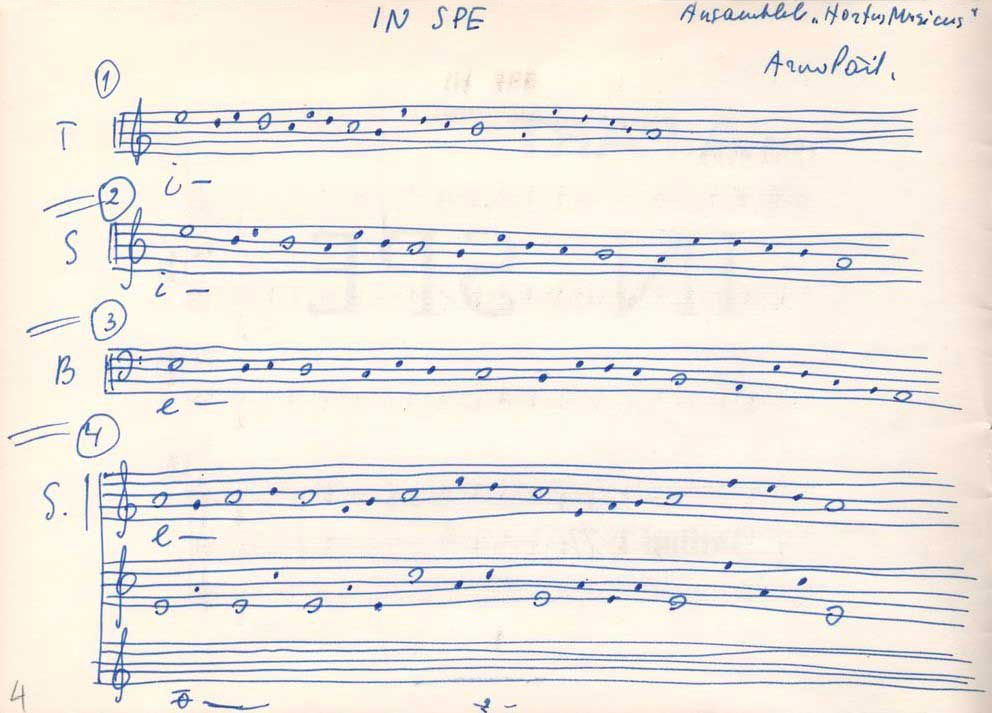Composed in 1976 for voices (S, A, T, B) and freely chosen instruments, In spe was premiered on 27 October in Tallinn at the Estonia Concert Hall by the early music ensemble Hortus Musicus to whom the composition is also dedicated.
In musical terms, it is a work in rigorous tintinnabuli technique, based on extremely sparse and concentrated material. Moving stepwise, the melodies are formed by segments around the main pitch, prolonged note by note, once moving up, once down, according to pre-determined rules. One or more tintinnabuli voices move along the triads corresponding to each melodic voice. These, in turn, are accompanied by one or more pedal notes. The composer has not determined the exact rhythm in the score and has only used white and black…
Composed in 1976 for voices (S, A, T, B) and freely chosen instruments, In spe was premiered on 27 October in Tallinn at the Estonia Concert Hall by the early music ensemble Hortus Musicus to whom the composition is also dedicated.
In musical terms, it is a work in rigorous tintinnabuli technique, based on extremely sparse and concentrated material. Moving stepwise, the melodies are formed by segments around the main pitch, prolonged note by note, once moving up, once down, according to pre-determined rules. One or more tintinnabuli voices move along the triads corresponding to each melodic voice. These, in turn, are accompanied by one or more pedal notes. The composer has not determined the exact rhythm in the score and has only used white and black note heads (i.e. long and short notes) with an approximate duration. We can very often see this type of notation in medieval music. Also, the dynamics are not marked in the score: the dramaturgical growth and decay in the music primarily occurs through the thickening and thinning of the musical texture.
The verbal element of the work is also very compact. The sung text of In spe (Latin for “in the hope”) consists of the vowels “i”, “e” and “o” from the opening part of the ordinary of the Mass: Kyrie eleison. Christe eleison. Kyrie eleison (Lord, have mercy. Christ, have mercy. Lord, have mercy.). Given the political situation of the Soviet time, this was like coded writing.
A new version for soloists or mixed choir and organ, with dedication to Andres Mustonen, the conductor of Hortus Musicus, was finished in 1984 in Berlin. Besides the new instrumentation, Pärt also gave the work a new title, An den Wassern zu Babel saßen wir und weinten (By the rivers of Babylon, there we sat down and wept), borrowed from Psalm 137, the song of David about the Babylonian exile of the Jews. Exile, rootlessness and the longing to return home were undoubtedly very personal and timely topics for Arvo Pärt. Only a few years earlier he had emigrated from Estonia to Austria and later to Germany. However, in a deeper sense, these feelings define the entire Judeo-Christian worldview.
The same music later became the basis for the versions for trombone and chamber orchestra (An den Wassern…, 1995), for soloists and instrumental ensemble (An den Wassern…, 1996) and for wind quintet and string orchestra (In spe, 2010).
